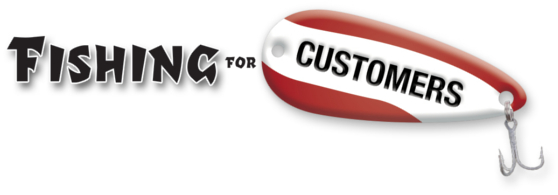When we talk about building your brand we always project into the future, and what your brand will become.
Customers need time to buy, and use, and make your product part of their lives. It takes time for one generation to introduce your product to the next generation. It takes time to develop your company’s heritage. That heritage will then become a major part of your brand.
Heritage implies tradition, and a traditional way of life. Heritage includes history, but also status, class, and character. Heritage has value to this generation, and to future generations. Heritage grows in shared experiences and common history.
Brands share their heritage in the form of meaningful, memorable, and relevant brand stories.
People love good stories.
Our cultural heritage is built around stories. Our great art involves stories. Our politics revolve around stories.
Today, with more entertainment choices available than any time in history, people still choose to be entertained by great stories of other human beings. Side note: the huge impact of reality programming just goes to show that today’s taste in gossip – or should I say storytelling – tends to run toward unvarnished “truth.”
Ah. Truth. Truth is subjective, isn’t it? During the last election which story got more traction? The story being told about John Kerry’s military service in Cambodia? Or the story being told about George Bush’s military service in Alabama? Which was the truth? Was either? Both?
People love a good story.
Do you need a story? If you’re determined to develop a brand, you do.
Good brand stories involve the user, and do so on an emotional basis. Your brand story must not be about the product.
A name by itself, although it may have recognition, isn’t a brand. Your brand must be more than a name. Your brand will become the sum of the values, the beliefs, and the actions of your company. Your brand story will be tempered by the experiences of customers in dealing with your company.
Good brand stories capture both the essence of a brand, and its desires for the future. Your brand story will tell the truth about your company. Maybe it won’t be today’s truth. Maybe it will be a truth that your company aspires to.
Disney’s brand story involves the past, present, and future. The past is portrayed as the ideal community with clean streets where no one is ever threatened. It’s present is safe, secure, and happy. In Disney’s future you’ll never grow old, get sick, or die.
Oprah’s brand story is that of American women’s best friend. Her show is made up of the back-and-forth conversation with emphasis on self-revealing intimacies that is the basis of female friendship.
McDonald’s brand story is one of families having fun together. A family outing to McDonald’s becomes a celebration. The food is secondary.
Your brand story must be consistent with everything your company does. Terrible things happen when the story you tell is contradicted by your actions. For instance, here is a different version of a brand story. You’ve no doubt seen it in your e-mail.
“When you forward this e-mail to friends, Microsoft can and will track it (if you are a Microsoft Windows user) for a two week time period. For every person that you forward this e-mail to, Microsoft will pay you $245.00, for every person that you sent it to that forwards it on, Microsoft will pay you $243.00 and for every third person that receives it, you will be paid $241.00 Within two weeks, Microsoft will contact you for your address and send you a cheque.”
Putting aside for a moment the realization that there are always going to be people who WANT to believe in fairies, in getting rich quickly, and in outrageous claims, why does this particular fraud continue to show up in our in-boxes? Perhaps it’s because many of us resent Microsoft.
Microsoft’s brand story is one of a rich company ruthlessly annihilating any and all competitors to maintain a monopoly.
Which leads to one more critical part of the equation: you get to write your brand story, but it won’t spread without the enthusiastic help of the ultimate users of whatever it is you sell. Brand stories originate with your company, but they belong to your customers. Once you’ve put your story into the marketplace, its’ no longer under your control.
We started this discussion by addressing folk heritage. The common stories of our heritage are what identify us as a people. The common stories of our heritage live in our minds, but even more deeply in our hearts. Brand stories become a major part of our common heritage.
When a motion picture, or a vacation destination, or an automobile, or a celebrity, or even a cleaning product becomes successfully attached to a powerful brand story, it enters our minds through our hearts to become imbedded in our memories. That’s when it becomes a brand.
